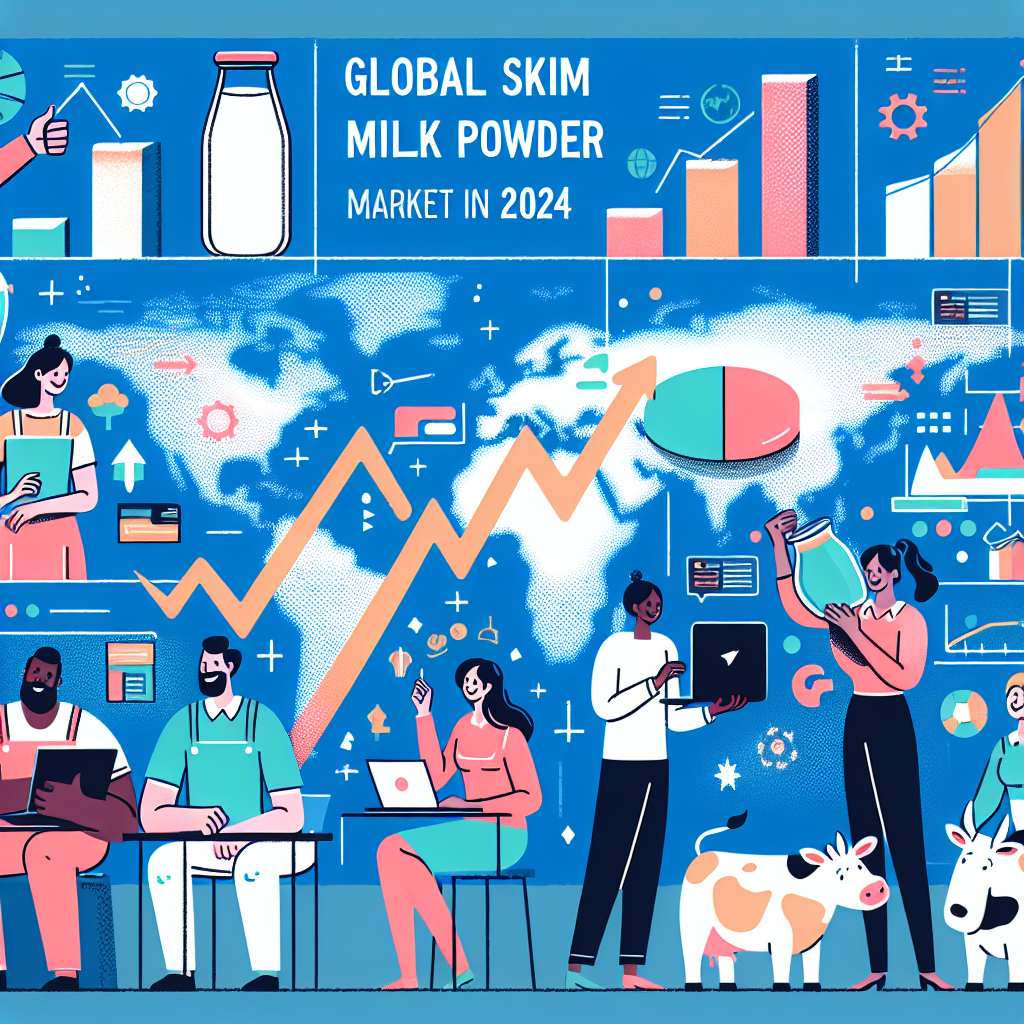What’s behind Australia’s 2024 skim milk powder and cheese production spike? How are dairy farmers handling the extra milk and rising exports?
Summary: Have you ever wondered what the future holds for your dairy farm? Brace yourself for some encouraging news. Australia’s dairy industry eagerly anticipates a 17% rise in skim milk powder (SMP) production in 2024, thanks to a steady increase in milk output. But that’s not all—SMP exports are forecasted to soar by 20%, creating lucrative opportunities in burgeoning markets like Vietnam and Saudi Arabia. Additionally, cheese production is set to reach 435,000 tons, driven by innovative farm management and technological advancements. This anticipated growth opens up new avenues for profit and sustainability in both local consumption and international markets. Are you prepared to make the most of these trends?
- Australia is set to see a 17% rise in skim milk powder (SMP) production in 2024.
- SMP exports are expected to increase by 20%, expanding Vietnam and Saudi Arabia markets.
- Cheese production in Australia is projected to reach 435,000 tons, supported by advanced farm management and technology.
- Increased milk output is the primary driver behind SMP and cheese production growth.
- The growth in dairy production offers new opportunities for profitability and sustainability.
- Both local and international markets are set to benefit from this anticipated growth.

Australia is poised to significantly increase skim milk powder (SMP) and cheese production by 2024. This strategic expansion, driven by robust milk production and effective industry management, is set to reshape the dairy landscape. In 2024, Australia’s skim milk powder output is projected to surge by 17% to 170,000 tons, while cheese production will hit 435,000 tons. But what does this mean for you as a dairy farmer? How will these changes impact your business, lifestyle, and the overall market? Let’s delve into these figures and explore the underlying causes. What’s fueling the increase in milk production? How do industry shifts and market needs shape the future of SMP and cheese? This post will spotlight the key features and provide crucial insights for the upcoming year, reassuring you about the strategic planning and management of the dairy industry.
What Dairy Farmers Need to Know About the 17% Rise in Skim Milk Powder Production for 2024
Skim milk powder (SMP) output is expected to increase by 17% in 2024, reflecting Australia’s overall more excellent milk yields. This rise is not a coincidence; it is driven by an overall increase in milk output and the proper requirement to handle more significant amounts during peak production seasons. Dairy producers understand the cyclical nature of milk production, with peak periods when cows are most prolific requiring effective techniques to manage excess.
One notable feature is the complex link between SMP and butter production. Typically, these two things are created simultaneously. When the milk supply increases, so does the production of SMP and butter. This is mainly because butter produces a byproduct, buttermilk, which is often processed into SMP. As a result, properly managing higher milk quantities entails increasing the production of both products.
Riding the Wave of International Demand: SMP Exports Set for a 20% Boom in 2024
Regarding exports, Australia’s SMP output is expected to increase by 20%, reaching 160,000 tons in 2024. This jump in SMP exports is primarily driven by rising demand in various overseas markets. Historically, China and Indonesia have been the primary users of Australian SMP. However, recent patterns show a noticeable change.
While China remains an important market, increased domestic milk production has lessened its dependence on imports, resulting in lower Australian exports to the area. This transition has been carefully addressed by focusing on new and growing markets. For example, Vietnam, Thailand, Malaysia, and Saudi Arabia have shown increased demand for Australian SMP, helping to offset a drop in shipments to China.
Such diversity generates additional income sources while mitigating the risk of reliance on a single market. Understanding these export dynamics and the changing global market scenario may help dairy farmers plan their operations and long-term strategies. Embracing these developments and planning for greater demand may benefit Australian dairy farmers internationally.
The Dual Engines of Cheese Production Growth: Abundant Milk Supplies and Cutting-Edge Farm Management
The continuous rise in milk supply is a significant factor supporting the expected cheese output of 435,000 tons in 2024. However, it’s not the sole contributor. Australian dairy producers have proactively invested in technology and refined efficient management strategies to maintain robust output despite the sharp input price spikes. This emphasis on technology in the dairy industry is a reason for optimism about the future.
How precisely has this been accomplished? Consider precision farming technology and automation systems that help to simplify everyday activities, such as milking schedules and feeding protocols. These improvements save time, optimize resource utilization, and reduce waste, ensuring that every drop of milk contributes to the final product. Robotic milking systems, for example, save labor costs while collecting crucial data, allowing farmers to make educated choices quickly and correctly.
Effective management procedures must be emphasized more. Farmers use practices such as rotational grazing, promoting sustainable pasture management while increasing milk output and quality. Furthermore, the execution of herd health programs ensures that cows are in top condition, leading to constant milk output.
It’s also worth emphasizing that consistent profitability is critical. Reinvesting income in agricultural operations enables constant development and response to market changes. Given the expected local consumption and expanding export markets, sustaining high production levels becomes both a problem and an opportunity for Australian dairy producers.
Although increased milk supply set the groundwork, the strategic use of technology and savvy management propelled the thriving cheese manufacturing business. These aspects work together to guarantee that Australian cheese fulfills home demand while also carving out a significant niche in overseas markets.
Australia’s Cheese Obsession: From Local Favorites to Global Delights
Australia stands out in terms of cheese consumption. Domestic consumption is expected to reach a stunning 380,000 tons in 2024. This number demonstrates Australians’ strong preference for locally made cheese and the vital role cheese plays in the country’s culinary traditions. The strength of the domestic market provides dairy producers with a consistent cushion in the face of variable worldwide demand.
The expected export of 165,000 tons of cheese is noteworthy globally. Despite competitive challenges and global uncertainty, Australian cheese maintains a considerable market share in key export destinations such as Japan, China, and Southeast Asia. These markets have continually preferred Australia’s high-quality cheese products, showing the country’s ongoing competitive advantage globally.
Japan remains an important partner, recognizing Australian cheese’s superior quality and consistency. Meanwhile, China’s changing dairy tastes and Southeast Asia’s burgeoning middle-class help drive up demand. This combined emphasis on home consumption and worldwide exports presents a bright future for Australian dairy producers, blending local loyalty with global potential.
The Bottom Line
As we look ahead to 2024, the anticipated 17% increase in skim milk powder output and significant growth in cheese production underscore a thriving and dynamic dairy sector. This upward trend, fueled by increased milk supply, improved farm management methods, and growing worldwide demand, presents a promising future for the dairy industry. SMP exports are set to rise by 20%, driven by high market interest from regions beyond China. At the same time, the robust demand for Australian cheese, both domestically and internationally, signals a bright future for the dairy industry.
These shifts bring possibilities and challenges, prompting dairy producers to reconsider their tactics and prospects. How will you use these industry trends to improve output and broaden market reach? Are you prepared to adapt to changing customer tastes and global market dynamics to guarantee your business operations’ long-term viability and profitability?













